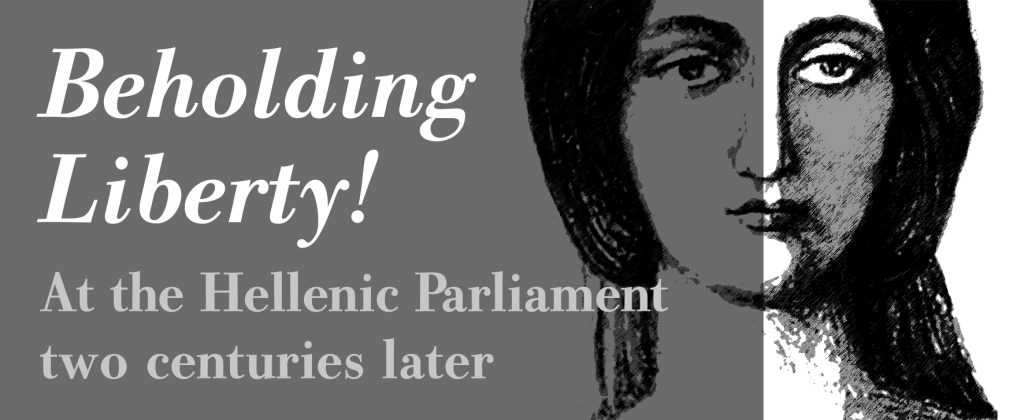
The Frieze of the Revolution
The murals of the Hall of the Trophies extend in the form of a frieze all around its four walls, aligned from the north to the west wall, along a band of 120 cm in height, and total length of 59 metres.
The representations of the Frieze were designed in 1836, with pencil and ink, by the Bavarian sculptor Ludwig Michael von Schwanthaler (1802-1848), court artist in Munich of Ludwig I, they were painted by a group of Bavarian artists, specialized in the technique of fresco considerably later, probably around 1842-43, namely during the final phase of the erection of the palace in Athens, for the young king Otto.
They depict military events and political-diplomatic developments that determined the Struggle for Independence, from its declaration up to the arrival of Otto (1821-1833), while symbolic figures are also inserted in between.
The twenty distinct representations are identified as follows:
- The oath of the Greek revolutionaries in Vostitsa
- The uprising of the Greeks in Patras
- Assembly at Kalamata
- The glory of Patriarch Gregory V
- Revolution of the Greeks against the Turks
- Victories of the Greeks on land and at sea
- The National Assembly at Epidaurus
- Kanaris sets the Turkish fleet on fire at Chios
- Mavrokordatos defends Missolonghi
- Botsaris attacks the camp of the Turks at Karpenissi
- Nike (Victory) hovers over sunken ships
- Ravaging of the Peloponnese by Ibrahim
- Personification of the city of Missolonghi
- The Treaty of London
- Victory of the Greeks over the Turks at sea
- The naval battle of Navarino
- Personification of Greece
- The foundation by Kapodistrias of the «Panhellenion»
- Ludwig I presents Otto to the Greek envoys in Munich
- The arrival of Otto in Nafplio
